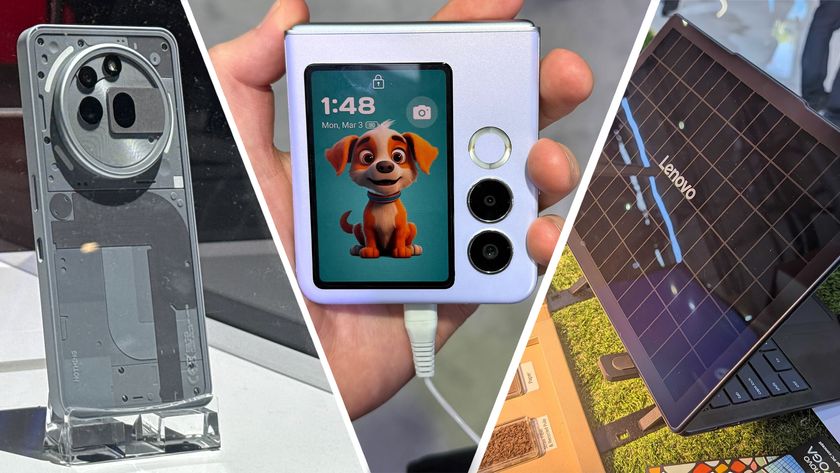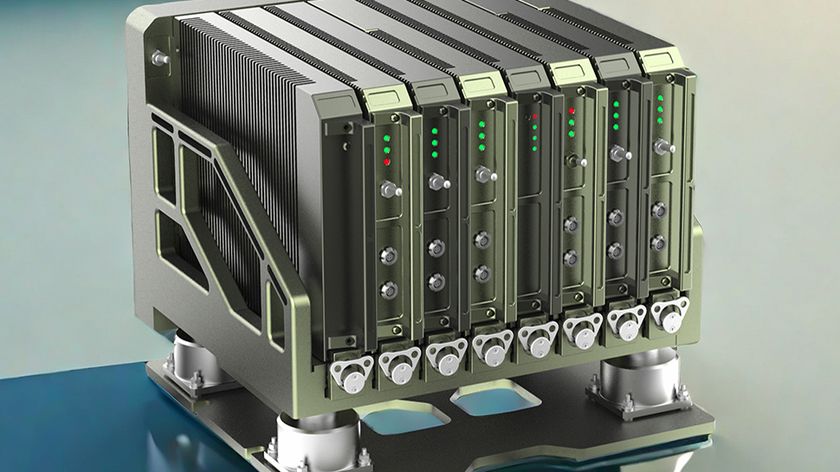This is how we'll get to Mars
The tech that will take us to the red planet
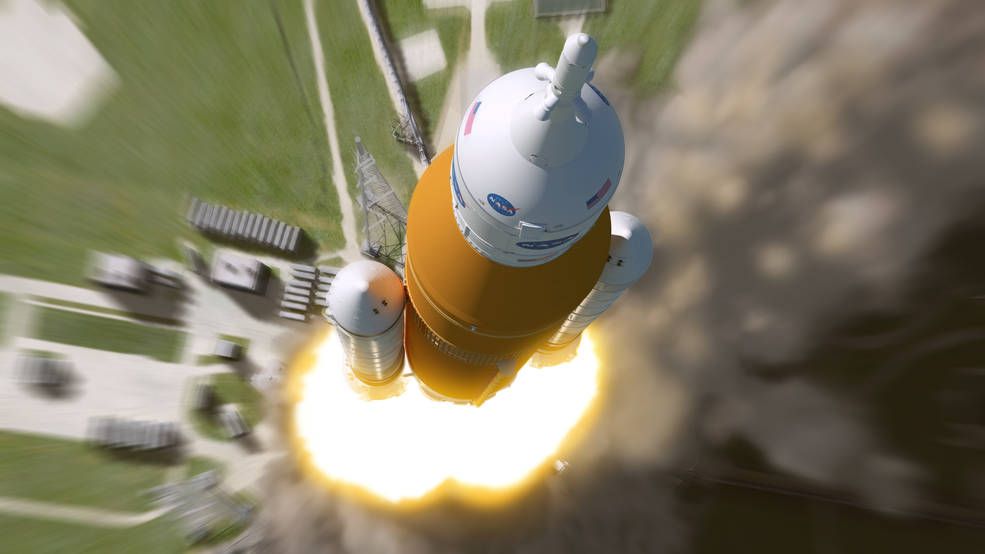
Main image: NASA's Space Launch System will be an essential component of missions to Mars. Credit: NASA/MSFC
Ever since the dawn of science fiction we’ve been fascinated by Mars. Our planetary neighbour has been the subject of some of the greatest space stories in history, from the invasion of Martians in The War of the Worlds to humans going the other way in The Martian.
Now, after more than a century of dreaming about the Red Planet, developing scientific breakthroughs, and researching its potential for exploration and sustaining life, we’re ready to go. Well, nearly.
Earlier this year, NASA released a progress report on its plans for deep space exploration, including a mission to Mars, while US president Donald Trump pledged $19.1 billion in funding to help NASA get to Mars.
And getting there is about more than simply staking a claim on Mars and fulfilling our sci-fi-fuelled dreams. Many experts believe that if we don’t start looking for other locations within our solar system to mine resources, or even live, the human race is on borrowed time.
This sense of urgency has been fueled by prominent figures like Elon Musk and Stephen Hawking. At a press conference in Norway earlier this year Hawking said: “I strongly believe we should start seeking alternative planets for possible habitation [...] We are running out of space on Earth, and we need to break through the technical limitations preventing us living elsewhere in the universe.”
Why aren’t we there yet?
Missions to Mars have been discussed among the scientific community for decades, and NASA has already developed a lot of the technology and scientific know-how to get us there.
Get daily insight, inspiration and deals in your inbox
Sign up for breaking news, reviews, opinion, top tech deals, and more.
We asked astrophysicist and science writer Andrew May, author of Destination Mars: The Story of Our Quest to Conquer the Red Planet why we haven’t yet touched down on Martian soil.
“In terms of basic ‘rocket science’, the technology that took Apollo to the Moon could have been extended to a Mars mission relatively easily,” he explained.
“It's a longer journey, but in the years since Apollo there's been plenty of experience of long-duration spaceflight, with Earth-orbiting space stations like MIR and the International Space Station (ISS). So at a theoretical level, there's nothing fundamental stopping us going to Mars.”

So why are we still stuck here on boring old Earth and not going on holiday to the Cassini Crater? We spoke to Dr Phil Metzger, a planetary physicist who recently retired from NASA’s Kennedy Space Center, where he co-founded the KSC Swamp Works, performing research related to solar system exploration.
“We need to develop the technology, like the Mars Transfer Vehicle, to carry astronauts during a long journey to Mars and back.” he told us. “We could start building this hardware now, but money is a factor.”
“Since the budget is limiting, we must find ways to do the Mars missions more affordably, and that means we need new technology.”
Aside from cost, we also need to consider the implications of taking missions further than we’ve ever gone before.
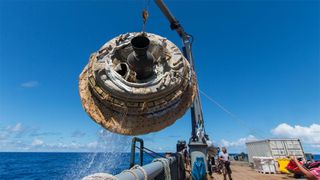
“There are risks involved in going to the Moon, but if something goes wrong, there are usually convenient ‘abort modes’ that can get you safely home within a day or two,” says Andrew May.
“That won't be an option with a Mars mission – once you're on the transfer trajectory, you're committed to a journey of at least a year and a half.”
According to May, the solution is rigorous testing. “All systems need to have very high reliability, with multiple redundancy and backups,” he explained.
“That applies to everything from rocket engines and computers to life support and the health of the crew. So that's where all the planning, testing and de-risking effort needs to go.”
NASA has a plan
NASA has a detailed plan for getting to the red planet. Journey to Mars divides up the different phases of testing and scientific planning, with the aim of putting humans in orbit around Mars by the 2030s. Fingers crossed.
The first phase is called Earth Reliant, and is focused on research aboard the International Space Station (ISS), including testing communications and investigating how the health of astronauts is affected by long periods in space.
Next up is the Proving Ground phase, which involves conducting missions near the Moon, which will check whether all of the tech and engineering needed for us to live and work on Mars is viable.
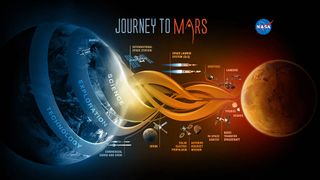
This is when the Space Launch System will be tested, and the Orion spacecraft will be sent unpiloted thousands of miles beyond the moon on an approximately three-week mission. The next stage will see astronauts manning Orion for a similar mission.
Finally comes the Earth Independent phase, which will build on everything that NASA will have learned thus far, with the aim of sending humans to low-Mars orbit by the 2030s. A big part of this stage is testing entry, descent and landing techniques.
“Since the budget is limiting, we must find ways to do the Mars missions more affordably, and that means we need new technology.”
Dr Phil Metzger, former NASA physicist
And it’s not just the efforts of NASA that we need to keep a close eye on. The organization has competition in the shape of private companies like Elon Musk’s SpaceX and Boeing, with the former setting a goal to arrive on Mars by 2020.
Rather than cause friction, however, many believe this competition will lead everyone to develop more creative solutions, with NASA learning from the experiences of private companies and vice versa.
The challenges to overcome
It’s all well and good to discuss NASA’s bold plans for the future. But we also wanted to explore some of the hands-on research and testing currently being undertaken.
We spoke to Kathryn Hambleton from the Human Exploration and Operations Mission Directorate at NASA communications team, who told us: “There are eight core areas that we’re currently focusing on when it comes to tech development aboard the ISS in preparation for the Journey to Mars.”
“Many of them are concerned with reliability, efficiency, and independence, so we won’t have to depend on frequent resupply missions or constant communication with Earth.”
These eight core areas include life support, environmental monitoring, crew health, extravehicular activity, radiation protection and fire safety.
In space, there’s no next-day delivery
It’s not hard to imagine needing a tool, extra food, clothing or a piece of medical equipment in space that hasn’t been planned for – and with resuppply missions taking months rather than days, all eventualities need to be considered in advance.
One of the ways to combat such problems is giving astronauts the tools to make things for themselves. “We’re testing 3D printing so that we have the capability to print spare parts and tools as needed, rather than taking as many spare parts as you could possibly think you might need with you when you leave Earth,” Hambleton explained.
She added that it’s not just important parts and medical equipment that need to be considered, but run-of-the-mill products that many of us would take for granted, like clothing.
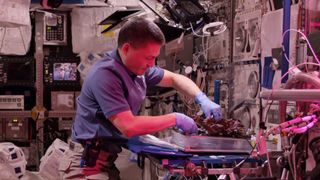
“We’re working on a solution for clothing because at the moment astronauts often wear clothes then dispose of them,” she told us. “We may consider a laundry system, as well as better materials for clothing that can be worn longer and control odour better, like wool.”
NASA is also putting a lot of thought into food. You might think you could squeeze a few thousand of those airline-style meals on-board a Mars-bound spacecraft, but space will be so limited that even more compact foods are being developed.
Researchers also need to see how food could affect the crew’s morale, since taste and variety play an important role in physical and mental wellbeing. “We need to make sure we have enough food in space for what we anticipate to be a three-year mission,” adds Hambleton. “But it needs to be able to be stored for that length of time. And let’s not forget it needs to taste good too.”
With this in mind, an on-board vegetable production system is being tested aboard the ISS, for food production, to control temperature and to help remove carbon dioxide and provide a source of oxygen.
Staying healthy and happy in space
NASA has been working on all kinds of solutions to ensure that astronauts remain mentally and physically well on long-endurance space missions, from state-of-the-art exercise equipment through to managing mental health with a better understanding of sleep-wake cycles.
When it comes to health, Hambleton explained that a lot of thought has also been put into what to do in the event of an emergency.
“If there’s a medical emergency in space, astronauts will need training and equipment to be able to diagnose and treat injury or disease we need to be able to deal with it straight away. If we have to communicate with Earth there could be a lag of 20 minutes,” she told us.
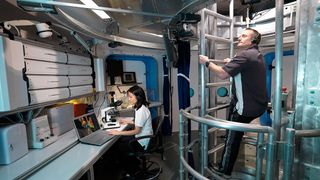
That’s one of the many reasons why bolstering communications efforts has been important to NASA.
Most recently a communications system called LEMNOS, which stands for Laser-Enhanced Mission and Navigation Operational Services, has been engineered, which could bring 4K Ultra-HD video to astronauts as they communicate with friends, family and colleagues back on Earth with minimal lag times.
In order to get to Mars, the vessel necessary needs to be developed to take astronauts all the way there in a small space, while also giving them enough room to live and move around.
NASA has been working on the Human Exploration Research Analog (HERA), a self-contained environment that simulates what it’s like to live in space.
Think of it like a mock-up of a spaceship with three stories, living spaces, workspaces and a simulated airlock. Within this space, test subjects go about their day-to-day tasks, complete objectives and live together.
Starting the countdown to touchdown
You may have noticed there’s no phase of the Journey to Mars plan that outlines how we’ll live on Mars and start to build a colony. That’s because there’s no plan for it yet.
“We don’t approach Mars in terms of colonisation, [we’re] focused on expeditions in the long-run,” Hambleton explained. “We want a sustained human presence on Mars, but it would be similar to the International Space Station or expeditions to Antarctica. We want astronauts there, but we’d bring them home on regular rotation.”
That’s why it’s important to not solely focus on NASA’s efforts. “Companies like SpaceX want to land on Mars much sooner, and they would use leaner development methods with higher risk than NASA is able to employ, so it’s possible they might do landing missions before NASA does,” Metzger told us.
Making Mars work in the long term
If we look further ahead than NASA’s current plan and towards sustaining life on Mars for long-term expeditions, or even colonization, the key is to utilize what’s on the surface rather than expecting the Martian planet to accommodate us.
“We need to create infrastructure on Mars as quickly as possible, and make extensive use of local resources to reduce reliance on supplies from Earth,” May told us.
Metzger explained some of the most important examples: “We can develop technology to make rocket fuel using carbon from the Martian atmosphere and hydrogen from the icy Martian soil. Then we don’t need large spacecraft to send all the propellants to Mars and down to the surface. We simply make them where we need them.”
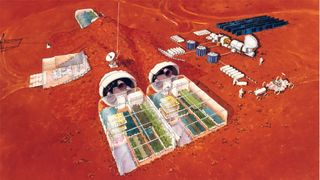
Metzger believes that in order to use resources already present on Mars in this way, we need to start building and testing the technology as soon as possible.
He explained: “We need to start building mining robots to get water from the soil; atmospheric processing systems to make methane rocket fuel from the carbon dioxide; radiation shielding technology to reduce health risks to the astronauts; water cleanup to get the toxic perchlorates out of the soil so it is safe to drink and use in agriculture; and much more.”
“With the right infrastructure we can create designer spaces for humans throughout the solar system“
Dr Phil Metzger, former NASA physicist
From there, Metzger believes that a robotic industry could transform Mars, and even turn it into a green planet. “We could transform soil for agriculture, build cities, and change the chemistry of the atmosphere,” he told us. “It could recycle itself to leave Mars green. Power stations in Mars orbit could even beam clean energy to the surface to sustain that civilisation.”
But let’s not forget that, at present, a lot of these plans are purely speculative – we won’t know for sure how much we can do until we get there.
“As to whether there are enough resources on Mars to support life indefinitely, including oxygen, water, food, fuel, electric power, building materials and meals, well, on paper it looks like the answer is yes, but we won't know until someone tries,” May told us.
Beyond Mars
“I think it’s ethically necessary that we get our civilization beyond the limits of our single planet,” Metzger told us. Although there are many hurdles to overcome, both Metzger and May believe settling on Mars could give the human race a bright and promising future.
“Overall I am very optimistic about the possibilities,” Metzger told us. “With the right infrastructure, we can transform Mars, but not just Mars; we can create designer spaces for humans throughout the solar system, and transportation networks to take us there.”
Looking into the distant future, he added: “It will be the golden age of science in the solar system as we build observatories and particle colliders too large for Earth, as we put scientific outposts on every large planetary body in the solar system, and as the economic output of space industry funds all the science we can dream of pursuing.”
This article is brought to you in association with Vodafone
Becca is a contributor to TechRadar, a freelance journalist and author. She’s been writing about consumer tech and popular science for more than ten years, covering all kinds of topics, including why robots have eyes and whether we’ll experience the overview effect one day. She’s particularly interested in VR/AR, wearables, digital health, space tech and chatting to experts and academics about the future. She’s contributed to TechRadar, T3, Wired, New Scientist, The Guardian, Inverse and many more. Her first book, Screen Time, came out in January 2021 with Bonnier Books. She loves science-fiction, brutalist architecture, and spending too much time floating through space in virtual reality.



